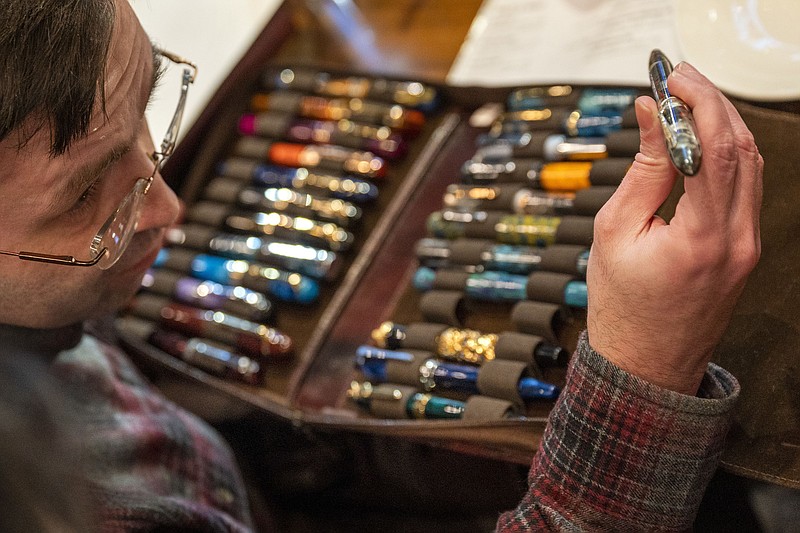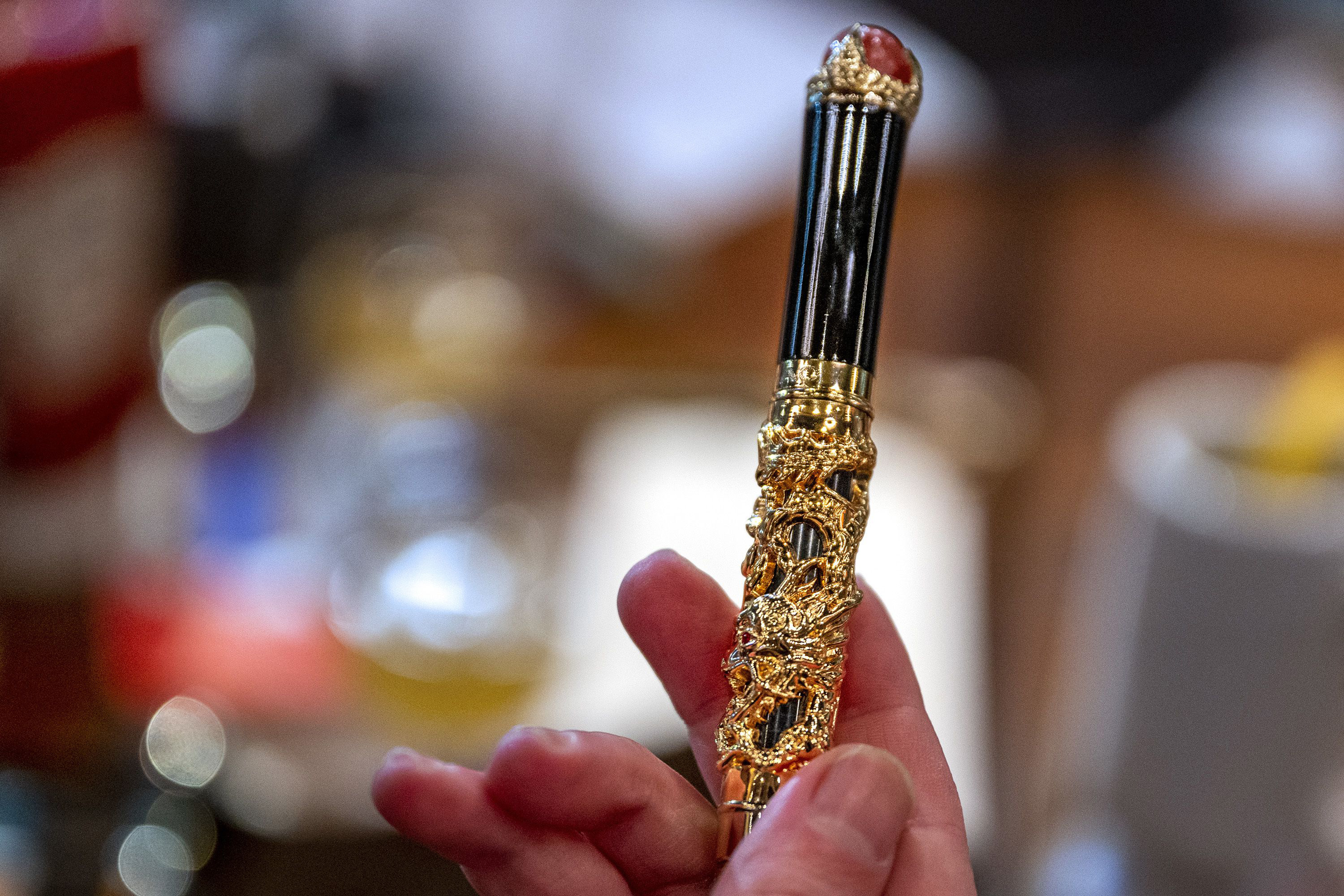PHILADELPHIA -- At the second meeting of the Philly Pen Circle, attendees signed their names in a ledger from the 1800s and compared custom fountain pen nibs. Over the course of the evening, their fingers became progressively more stained with ink.
The club, for those who like pens, paper, "and other actual objects," is a bit of a splinter group. Michael McGettigan, a South Philly bike shop owner and analog aficionado, founded it in January after determining that the city's more-established pen collectors group gathered too rarely. (They meet quarterly). The new group meets monthly and about a dozen people assembled recently to talk pen history, pen futures, and, of course, pen gossip.
"You hear buzz -- oh there's this new paper you have to try," said Lyngine Calizo, 52, a co-organizer.
Even as many of us work remotely and socialize on smartphones, McGettigan believes we're living in an analog golden age. Vinyl sales are up, film cameras are cool again, and suddenly everyone wants to write in a bullet journal. (He may be a little biased: he has hosted a range of analog-passion meetups, from typewriter "type-ins" to letter-writing nights, over the years). In a sign of just how much everything old is new again, he compares today's pen club to gatherings of early hackers. And he's already considering the group's legacy.
"A peculiar goal is that maybe 100 years from now, written evidence is found proving there was a Philly pen circle," he wrote before the meeting.
Fountain pens, with their internal reservoirs of ink and metal nibs, are both status objects and nostalgic portals for those devoted to them.
"It forces you to think," said Stan Minkovsky, 46, who works ("you'll be surprised") as a computer programmer. "With a computer, you can easily erase it. Once you put the pen on paper, it's permanent."
For the most part, pen aficionados see the digital world and the analog one as complementary. They save their harshest critiques for ballpoint pens, which Calizo described as "soulless." (The group was universally appalled by the cheap swag ballpoint pen I was using to take notes).
"Has anyone brought up the term pen-abling yet?" asked Calizo. She first tried a fountain pen in grade school and loved it; years later she braved a blizzard to attend Philly's annual pen show.
Many fountain pens aren't expensive, but some are "grail pens," extraordinary objects that can inspire a lifelong quest -- and cost an enormous amount of money.
Mike Gealt, 74, estimates he spent about $20,000 on pens last year. One of his favorites is an orange and blue Taccia Miyabi urushi-lacquered pen, which cost $850. Its outer shell is made from the sap of the urushi tree, which behaves like poison ivy before it hardens.
"I don't call myself a collector. I'm an accumulator," Gealt joked. He had learned about the Philly meeting from Washington's pen Facebook group; he attends their twice-weekly meetings online.
Fine pens require fine paper, and so the conversation at Iron Hill inevitably turned to stationery.
"Probably the most important quality for me is that it won't bleed. Feathering and bleeding," said Kevin Newcombe, 28, of West Philly. "I do obviously prefer that it sheen and shade well, but like ...."
"You write on both sides?" asked Nancy B. Turner, an academic librarian.
"Yes," Newcombe said. "And that's why it's so important to me."


